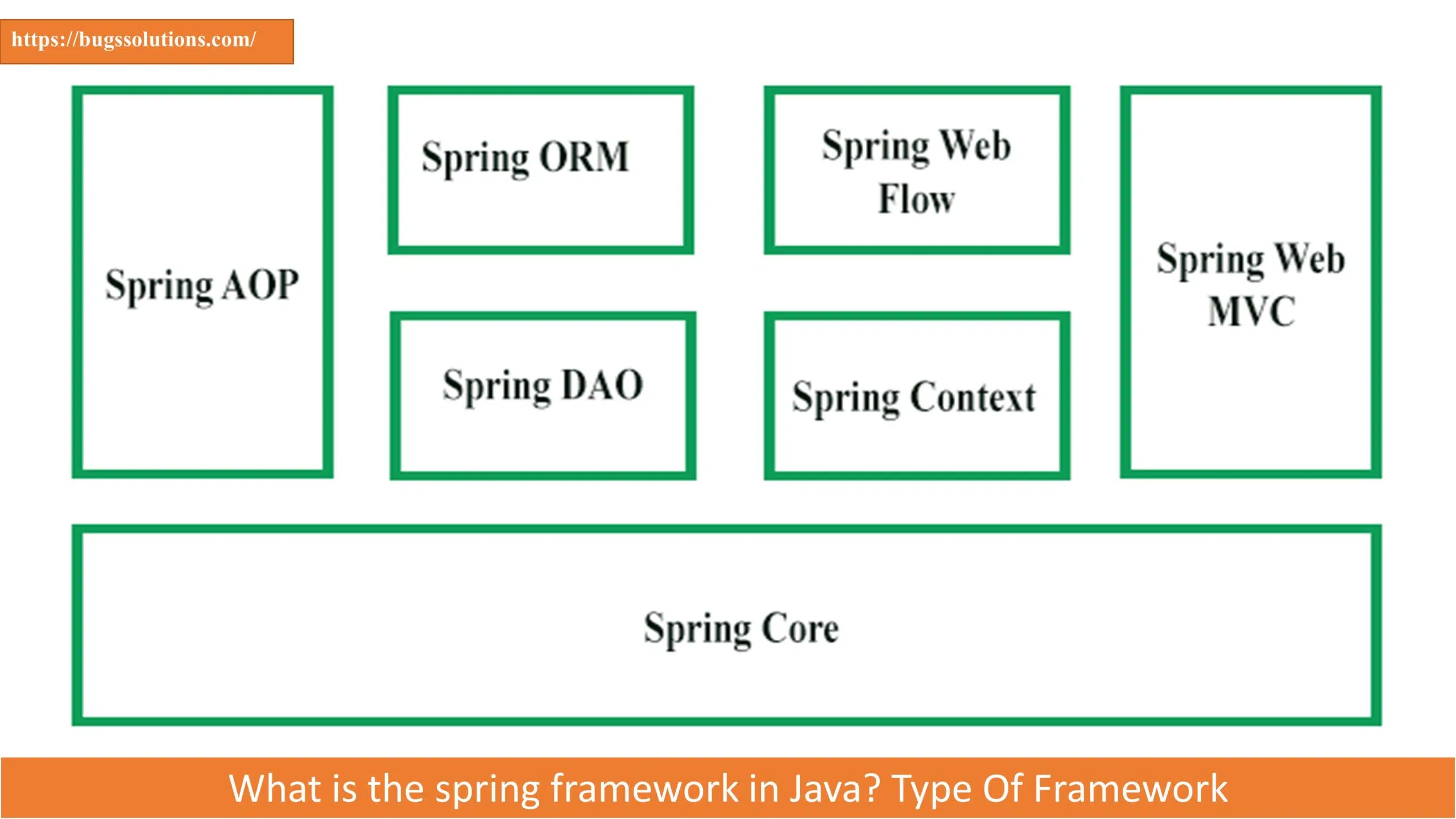The Spring Framework is a popular open-source framework for building Java-based enterprise applications. It provides comprehensive infrastructure support for developing various types of applications, from standalone desktop applications to large-scale web applications and microservices.
Inversion of Control (IoC): Spring allows developers to define application components and manage their dependencies. Instead of manually creating and managing objects, Spring’s IoC container takes care of this, making the code more modular and easier to maintain.
Aspect-Oriented Programming (AOP): Spring provides support for aspect-oriented programming, allowing you to separate cross-cutting concerns like logging, security.
Spring MVC: Spring offers a web framework for building web applications and RESTful APIs, known as Spring MVC. It enables the development of web applications using the Model-View-Controller pattern.
Security: Spring Security provides comprehensive security features for securing applications, including authentication, authorization, and protection against common security vulnerabilities.
Also Read : What is difference between robotics and automation? 2023
Spring Boot: Spring Boot is a project within the Spring ecosystem that simplifies the process of building production-ready applications by providing pre-configured templates, embedded servers, and opinionated defaults. It’s widely used for microservices development.
Spring Cloud: Spring Cloud is a set of tools and frameworks for building distributed systems and microservices, including service discovery, configuration management, and load balancing.
Inversion of Control (IoC) Container: The Spring IoC container manages the creation and lifecycle of application objects, promoting loose coupling and making it easier to configure and manage components.
Aspect-Oriented Programming (AOP): Spring supports AOP, allowing you to separate cross-cutting concerns like logging, security, and transactions from your application’s core logic.
Data Access and Integration: Spring simplifies data access by providing a consistent and easy-to-use abstraction layer for working with databases, JDBC, JPA, Hibernate, and other data technologies
Types of Spring Framework in Java
Spring Boot: Spring Boot is a project that simplifies the setup and configuration of Spring applications. It provides opinionated defaults, embedded servers, and a wide range of pre-configured templates to help you quickly build production-ready applications.
Spring Cloud: Spring Cloud is a set of tools and frameworks that assist in building distributed and cloud-native systems. It includes features like service discovery.
Spring Data: Spring Data simplifies data access by providing consistent data access abstractions for various data stores, such as relational databases, NoSQL databases, and more.
The Spring Framework promotes modularity, flexibility, and best practices for Java application development. It has gained widespread adoption in the Java community and is known for its ability to simplify the development of robust.
These modules collectively make the Spring Framework versatile and suitable for various application development scenarios, including web applications, microservices, enterprise applications, and more. Developers can choose the specific modules that best suit their project requirements.










